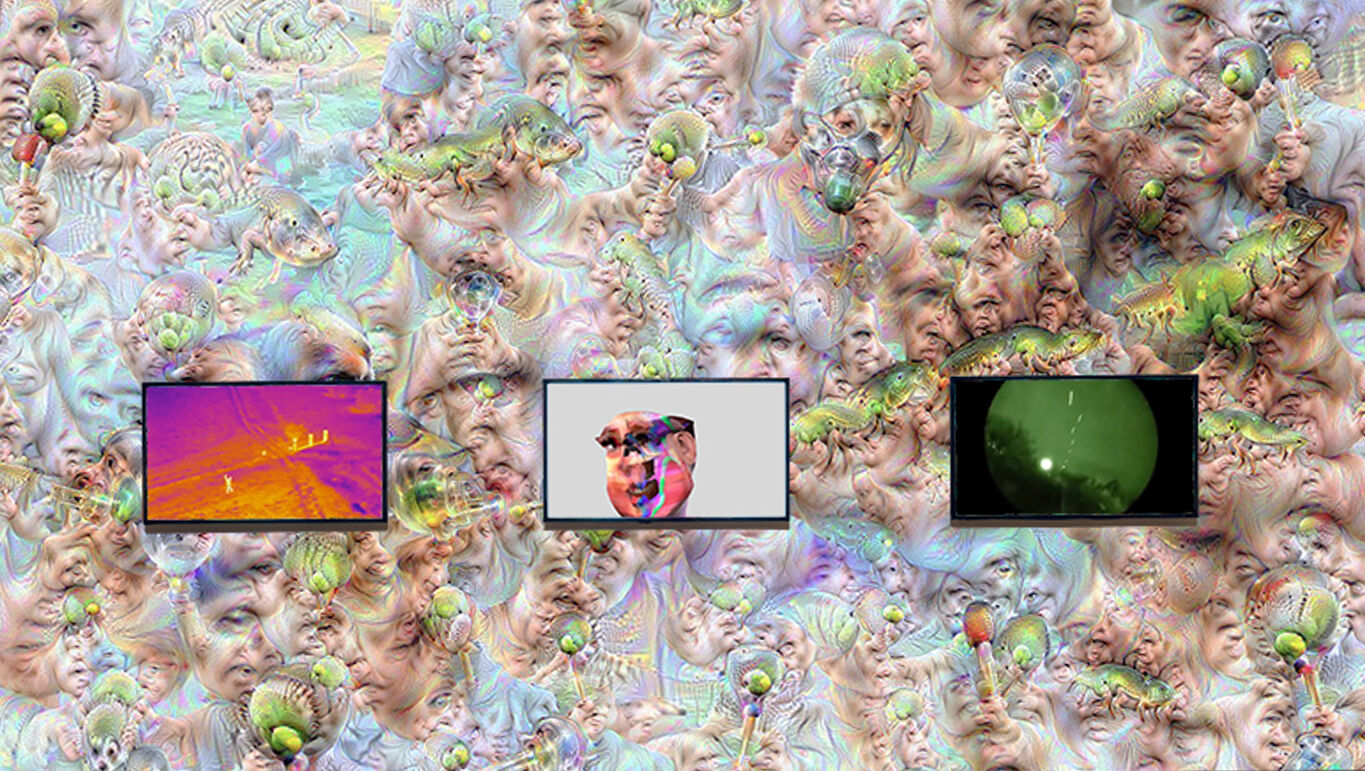Verbal Description: American Artist, Mother of All Demos III, 2022
Feb 13, 2023
0:00
Verbal Description: American Artist, Mother of All Demos III, 2022
0:00
Narrator: This sculpture, which is called Mother of All Demos III, has several components. The work is 59 inches high, 29 and a half inches deep, and 50 inches wide. Its composition includes computer parts, some real and some sculpted, atop a plain desk.
American Artist: My name is American Artist.
This work is a functional computer that is made out of dirt. It has this material of asphalt that's been poured onto it and it's sort of dripping and sticky with this black material. And it's on this desk that's sort of a standard desk. And what you see on the monitor of the computer is white text on a black interface. There's hand prints next to where the keyboard of the computer would be. And it appears that someone has just used this computer and they've touched the sticky surface and gotten their hands covered in this black material.
Narrator: The computer made out of dirt is a light brown color, with subtle variations in hue and texture throughout. It sits on top of the desk, and includes a keyboard. Towards the back of the white desk top, which would be farthest from you if you’re in front of the work, is a subwoofer cable, a rainbow-colored audio cable, here used as a video one, connecting to the dirt computer. About one inch wide and a foot and a half long, this subwoofer cable, which alludes to Black music culture, is the only brightly-colored part of the work, yet its size keeps it from becoming a dominant visual component. Sitting on top of the dirt computer, in front of the ribbon, is a real monochrome CRT monitor, which has a start-up screen with a black background with white text.
American Artist: When you first turn on the computer, the text scrolls down the screen and then it arrives at this moment where it asks you for a login password, and you get this blinking cursor that's kind of always going. And so most likely when you see it, it will not be scrolling or moving. You would just see this blinking cursor and it arrived at the bottom of this startup prompt.
Narrator: The blinking cursor is the only animated, or moving, element of the work, and seems to suggest a next step that is yet-to-be-typed.
American Artist: The shape of the computer is modeled after the Apple II, which was the last commercial personal computer that used this all black interface. And I wanted to make a computer that was really rooted in this moment where blackness served as the basis of what could be done in virtual space. So it was sort of a return to that moment, but also wanting to rethink all of the values that we associate with computing that things need to be fast or pristine or mimic an office space. I wanted to make something that felt dirty, sticky, things that you wouldn't necessarily want to touch, but then to show that someone actually is using this thing. And that was really about showing how much different computer technology could be if someone else had been in the room deciding what these different visual and formal design strategies would be.
Narrator: In front of the computer elements and on the keyboard is poured asphalt, which is a deep, glassy black color. The asphalt sits in a puddle at the front of the desk and is flanked by the two dark handprints on the white desk top’s surface. Although the asphalt is now hardened, a few thin drips curl downward around the front lip of the desk, giving us a sense of the material’s viscosity, which would be similar to syrup or house paint.
American Artist: I chose the asphalt because it is black and it's gooey. And this word gooey is sort of a way of saying this acronym GUI, which means “graphical user interface,” And that’s something that came around to computers around the seventies. And so the Black Gooey, which is part of the name of this series of works, was really about thinking about what a computation rooted in blackness could look like and what kind of material manifestations it might have.
Narrator: The title of this work, Mother of All Demos III, refers to a well-known event that took place in the field of computing in 1968 when engineer Doug Engelbart demonstrated many of the elements of modern computers, from windows to word processing. Before that, all computer interfaces had used only text-based code to perform different functions. American Artist’s work creates its own demo in which the color black becomes metaphorical. As American Artist describes it, Mother of All Demos III speaks to a pivotal moment in invention that Black thinkers were underrepresented in and excluded from. The artist references this historical moment in what they refer to as a kind of “thought experiment” that asks: how would Blackness as the basis of an operating system change how we receive and share knowledge today?
In Refigured.


